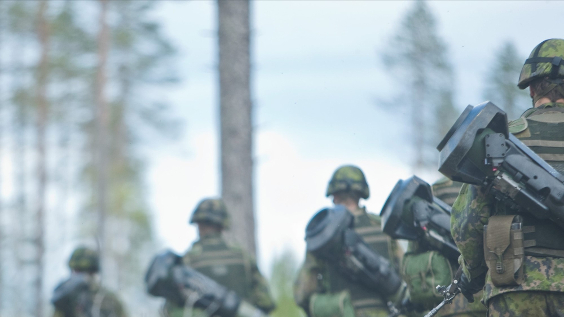
Building and maintaining the Defence Forces capabilities
The troops of the Defence Forces and their equipment constitute the capabilities of Finland’s defence system, the development of which is long-term and based on thorough planning. The Defence Forces Logistics Command participates in this work in all of its phases.
Government Reports on Security and Defence Policy guide development in the Defence Forces. Based on these reports and other analyses, the Defence Forces draws up development programmes in the framework of which the military capabilities to be sought are determined. These capabilities make up an entity comprised of weapon and other systems, troops and principles of using them which is capable of conducting any task required. The objective of capability building is to seek solutions which are suited for Finland’s circumstances and integratable into the defence system entity, sustainable from the perspective of resources.
To reach the objectives laid down in the development programmes, projects are launched in the framework of which the troops, systems and materiel are produced which are required for building such capabilities. The life cycle of the materiel acquired and the troops that will operate it follows a so-called life cycle model: a project starts with the definition of what is required, followed by capability planning, development and building.
The systems acquired will then be used by Defence Forces units, and measures are taken with the aim of improving and maintaining the capability. The life cycle of a capability reaches its end with the materiel and systems acquired being decommissioned.
The Defence Forces Logistics Command participates in the building, operation and maintenance of Defence Forces capabilities in all phases. Right from the start, the Logistics Command is involved in the programme planning process in cooperation with the Services intended to operate the capabilities and other FDF administrative units to work out the contents of the overall acquisition package. In the different phases of the capability’s life cycle, the Logistics Command is in charge of the technical, commercial and legal arrangements involving the acquisition, technical maintenance, capability development and decommissioning of the systems and materiel which fall within the scope of the project.
Military economics, Capabilities and the Logistics Command
The technical and commercial preparation for building material capabilities and the overarching coordination of the management of technical lifecycles fall under military economics.
According to the frequently used definition, “military economics” means all the national defence measures that are related to equipment procurements for the Defence Forces and the maintenance of material preparedness in different states of readiness.
The civilian component plays an important role in the maintenance of military economic material preparedness in the time of crisis. In other words, the contribution of Finnish and foreign industry and companies producing materials and services for the Defence Forces.
Military economics is also part of the general security of supply of the Finnish society, securing social functions in emergency conditions. Its maintenance is a common cause for military actors and others.
Under the Defence Forces’ military economics, the Logistics Command is responsible for sectoral steering, including the Defence Forces’ equipment management, partnership management, security of supply, explosives production and the related steering of the condition monitoring of explosives. International material cooperation is an integral part of the military economics system and also of the Logistics Command’s role in steering it.
